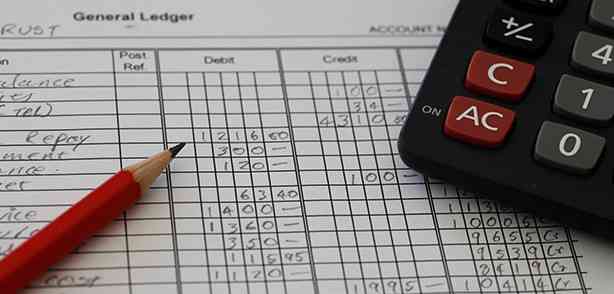
The General Ledger—How it Works
A general ledger account is an account or record that’s used to sort, store, and summarize your company’s transactions. It’s the lifeblood of your business and provides a report of how healthy it is.
General ledger categories include asset accounts, namely cash, accounts receivable (legally enforceable claims for payment held by a business for goods supplied and/or services rendered that customers/clients have ordered but have not paid for, generally in the form of invoices raised by a business and delivered to the customer for payment within an agreed timeframe); inventory investments (a component of the gross domestic product [GDP]. What’s produced in a certain country is eventually sold, but some of the goods produced in a given year may be sold in a subsequent year, rather than in the year they were produced); land, and equipment.
The general ledger is a master accounting document that provides a complete record of all the financial transactions of your business. It serves as a central repository for accounting data transferred from all subledgers.
Accounts arranged in a general ledger can be a grouping of as many as hundreds of accounts that are used to sort and store information from a company’s business transactions. They can be organized into balance sheet accounts, such as assets, liabilities, equity, and income statement accounts, which include revenue, expenses, gains, and losses; and the chart of accounts, a listing of general ledger accounts to which amounts can be posted. It’s a helpful tool for identifying the best account for recording a transaction. It includes balance sheet accounts, which report an organization’s financial position at the end of an accounting period; followed by income statement accounts, which report a summary of a company’s revenue, expenses, gains, losses, and resulting net income during a specific timeframe, such as year, quarter, or other specified time period.
In a nutshell, a general ledger helps you look at the bigger picture in terms of the financial health of your business. Accounts include assets (fixed and current), liabilities, revenue, expenses, gains, and losses.
Traditionally, in the past, accountants manually recorded financial transactions in a ledger, using the double-entry accounting method. However, with computers today, recording transactions has become easier. There’s no need to record and store the data in books by hand; business owners now use Excel® spreadsheets and other sophisticated accounting software.
Despite the advent of computers to track your business’s financial health, transactions still need to be recorded in a ledger. Accounting software can create financial reports, which are crucial for evaluating the health of your business.
Now that we’ve provided an overview of accounting, here’s a more detailed breakdown of how it works.
Double-entry Accounting
There are two primary types of accounting methods. Single-entry bookkeeping, where income and expense transactions are recorded in a cash register, compared to the double-entry system, which starts with a journal, followed by a ledger, a trial balance, and finally financial statements.
If you’re a solopreneur, the single-account method should work for you. However, the double-entry accounting method makes it easier to prepare financial statements and improve accountability. So, switching to the double-entry accounting method may be worth considering.
Regardless of which method you use for your business, general ledgers use the double entry accounting method, which means that an entry to one account requires an opposite entry to another account. Rephrased: every debit made on one account has a credit on another. Picture it as a positive canceling itself out in the negative column.
A debit is an accounting entry that results in either an increase in assets or a decrease in liabilities on a company’s balance sheet. A “credit” is the inverse—it’s an entry made on the right side of an account. It either increases equity, liability, or revenue accounts or decreases an asset or expense account.
Because credits and debits lead to the formation of an account that resembles the letter “T,” ledger accounts are also known as T-accounts; they’re called T-accounts, because the bookkeeping entries are laid out in such a way that resembles a T-shape and the account title appears just above the T. It’s an informal term for a set of financial records that use double-entry bookkeeping.
Journals
The term “journal” keeps a record of transactions; it isn’t a document that you log your personal life in. These transactions are first recorded before they’re transferred to ledgers. Ledgers look at the big picture in terms of the financial health of a business and serve as a master document, while a journal breaks down/analyzes the finer details of your business. And, comparable to a ledger, transactions are usually recorded on a daily basis and show a credit and a debit for each entry.
There are seven types of journals, the most common being sales, purchase, cash receipts, and cash payment. Below is a quick recap of each.
- Sales Journal records credit sales. For example, customers (debtors) who buy goods on credit or account. It records the credit sale of merchandise only.
- Purchase Journal records the credit purchase of merchandise, such as supplies and equipment. Since a purchase journal keeps track of merchandise purchased on credit, purchasing assets and other things on credit should not be recorded in a purchase journal; rather these entries should appear in a general journal.
- Cash Receipts Journal records all cash inflow, such as cash for services rendered.
- Cash Payments Journal records all cash outflows, also known as cash receipts, and is generally used in medium- and large-size businesses.
The Basic Accounting Equation
The purpose of double entry accounting is to make sure a basic accounting equation balances, meaning the relationship between assets, liabilities, and the owner’s equity of a business. It’s the foundation for the double-entry bookkeeping system. For each transaction, the total debits must equal the total credits.
If, at any time, the sum of debits for all accounts does not equal the sum of credits, the equation will not balance. Think of it like balancing your checkbook monthly.
Why Have a General Ledger?
You and your financial advisor need to decide what’s right for your small business when it comes to preparing a general ledger. While it’s not essential for a small business, here are compelling reasons why you should consider setting up a general ledger.
- You’ll have an accurate record of all financial transactions.
- It’ll help you compile a trial balance, so your books balance.
- It makes filing tax returns easy, because you’ll have expenses and income in one place. No need to dump out a shoebox and sort through little pieces of paper.
- It reports real revenue and expenses, which will help you stay on top of your spending.
- You’ll be able to spot unusual transactions immediately and address them.
- It helps you identify (and stop) fraud—something that’s important to all of us.
- It’ll help you compile key financial statements, such as cash flow statements, income statements, and balance sheets, all which are crucial when evaluating your profitability, liquidity, and the overall financial health of your business.
Recap
To sum it up, a general ledger tracks all the financial transactions related to your business. If you’re new to managing a general ledger, you may find it a daunting process; however, it’s a valuable tool that provides a picture of where you stand with the finances of your business. Remember, you can’t run a successful business without knowing where you stand with it financially.
To help break things down, you need to understand the fundamental principles of double-entry accounting, the basic accounting equation, and how to transfer journal entries to the ledger.
Once you understand and start using the general ledger, you’ll realize how powerful a tool it is. It offers several compelling benefits for your business. Arguably, the most important is that it’s the foundation for creating financial statements that are critical for evaluating your financial affairs.
Now That You Have a General Ledger…the Next Step is Merging Your Payroll with Your Accounting Software
When you switch to accounting software, such as QuickBooks®, which automates your company’s financial functions and transactions with modules that include accounts payable, accounts receivable, payroll, billing, and the general ledger, you’ll find yourself entering fewer numbers, tracking fewer receipts, and spending less time keeping everything in line. Plus, when you use a payroll service, such as ASAP Payroll Service, you can either use the online version of QuickBooks® or the desktop version. The combination of QuickBooks® and a payroll service will enable you to focus on managing your business day-to-day. This will save you time by making sure your cash deposits are handled correctly.
When you choose a payroll service (such as ASAP Payroll Service) and an accounting package (such as QuickBooks), both will be able to “communicate” with each other. This frees you from making manual entries. And, integrating a payroll service with your accounting software is generally a straightforward process for businesses of all sizes.
Step One: Get everyone on the same page
Before moving your information between systems (accounting and payroll), you’ll need to let your payroll provider and your accounting software vendor know that you want to share your information. So, make sure you double-check access from each side of the equation before you start sharing information.
Step Two: Map things out
Next, depending on your system, this is where your payroll software, such as ASAP Payroll Service’s Evolution software, a SaaS-based payroll and tax management system, can provide features, flexibility, and best practices to handle nearly every type of payroll, regardless of complexity or uniqueness.
Whether it’s handling simple payroll for a small company or complex payroll for a large company with multiple locations, Evolution can handle nearly every type of payroll. It supports payroll entries from employers from anywhere in the world with internet access via Evolution’s proprietary SaaS-based system. It’s also easy to accommodate payroll and reconciliation for any company structure with Evolution’s Client, Company, and Organization Level setup.
Beyond paying employees, keeping up with ever-changing federal, state, and local payroll taxes can be a complex and time-consuming task, but with Evolution’s integrated Tax Management engine, you’ll have the peace of mind that your business will remain compliant. Simply look for the button inside the payroll system on the ASAP Payroll Service website. It’ll take you to QuickBooks®.
Then, at some point, you’ll need to communicate to your accounting system how to handle the information that comes in from your payroll service. Sometimes this will appear on the accounting software side, at other times, you’ll tell the payroll service how to export the data.
Step Three: Completing the process
This isn’t a difficult system to setup or explain. You simply copy large quantities of your data from one location and paste it into another.
Final Thoughts
Nearly every system available today is a straightforward process. If you choose another option, it can be very time-consuming—where you’ll find yourself downloading a file and then uploading it into your accounting system.
Remember, your accounting software is a good place to start with integration.



